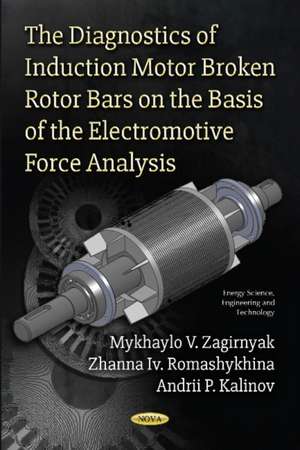Diagnostics of Induction Motor Broken Rotor Bars on the Basis of the Electromotive Force Analysis
Autor Mykhaylo V Zagirnyak, Zhanna Iv Romashykhina, Andrii P Kalinoven Limba Engleză Paperback – 30 noi 2017
Preț: 600.20 lei
Preț vechi: 747.34 lei
-20% Nou
Puncte Express: 900
Preț estimativ în valută:
114.84€ • 120.55$ • 95.33£
114.84€ • 120.55$ • 95.33£
Carte indisponibilă temporar
Doresc să fiu notificat când acest titlu va fi disponibil:
Se trimite...
Preluare comenzi: 021 569.72.76
Specificații
ISBN-13: 9781536126839
ISBN-10: 1536126837
Pagini: 185
Greutate: 0.3 kg
Editura: Nova Science Publishers Inc
Colecția Nova Science Publishers Inc
ISBN-10: 1536126837
Pagini: 185
Greutate: 0.3 kg
Editura: Nova Science Publishers Inc
Colecția Nova Science Publishers Inc
Cuprins
Preface; The Contemporary State of the Problem of Diagnostics of Induction Motor Broken Rotor Bars; Theoretical Foundation for the Research of Induction Motor Broken Rotor Bars in the Self-Running-Out Condition; Mathematical Models for the Research of the Method of Induction Motor Broken Rotor Bars Diagnostics; The Method of Induction Motor Broken Rotor Bars Diagnostics with the Use of Wavelet Transform; The Experimental Verification of the Method for the Diagnostics of Induction Motor Broken Rotor Bars; Conclusion; References; Appendix; Index.
